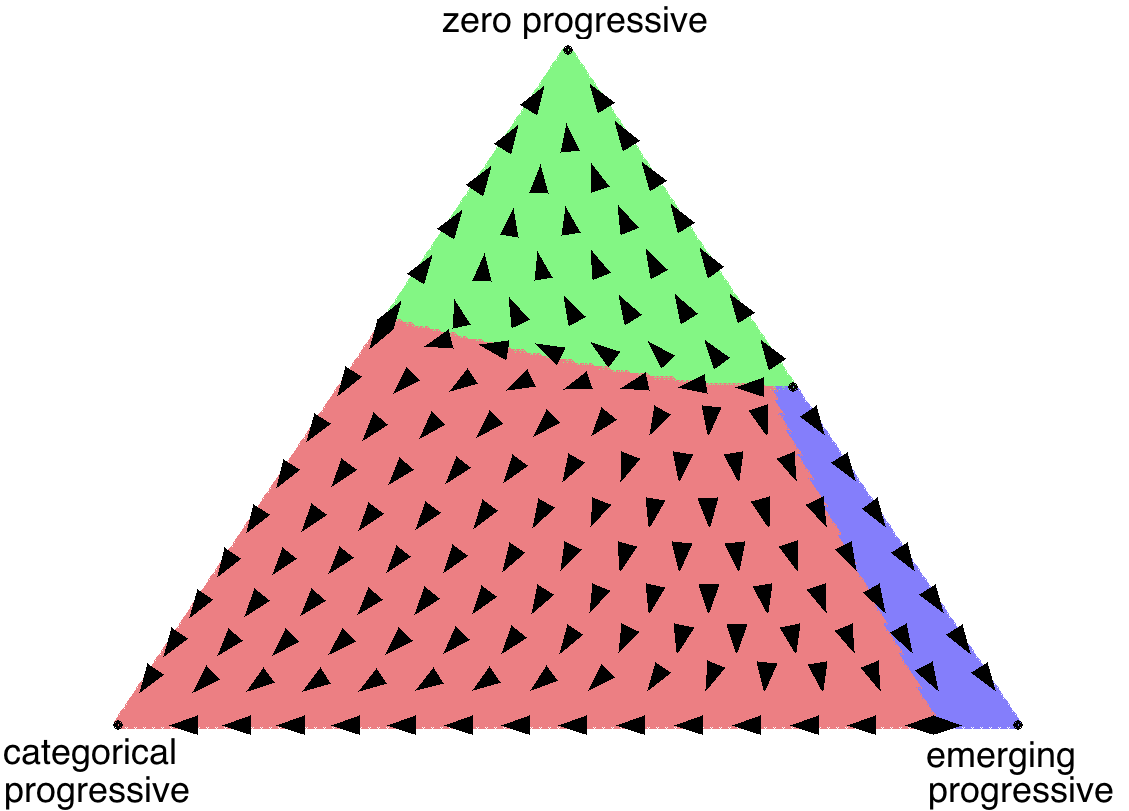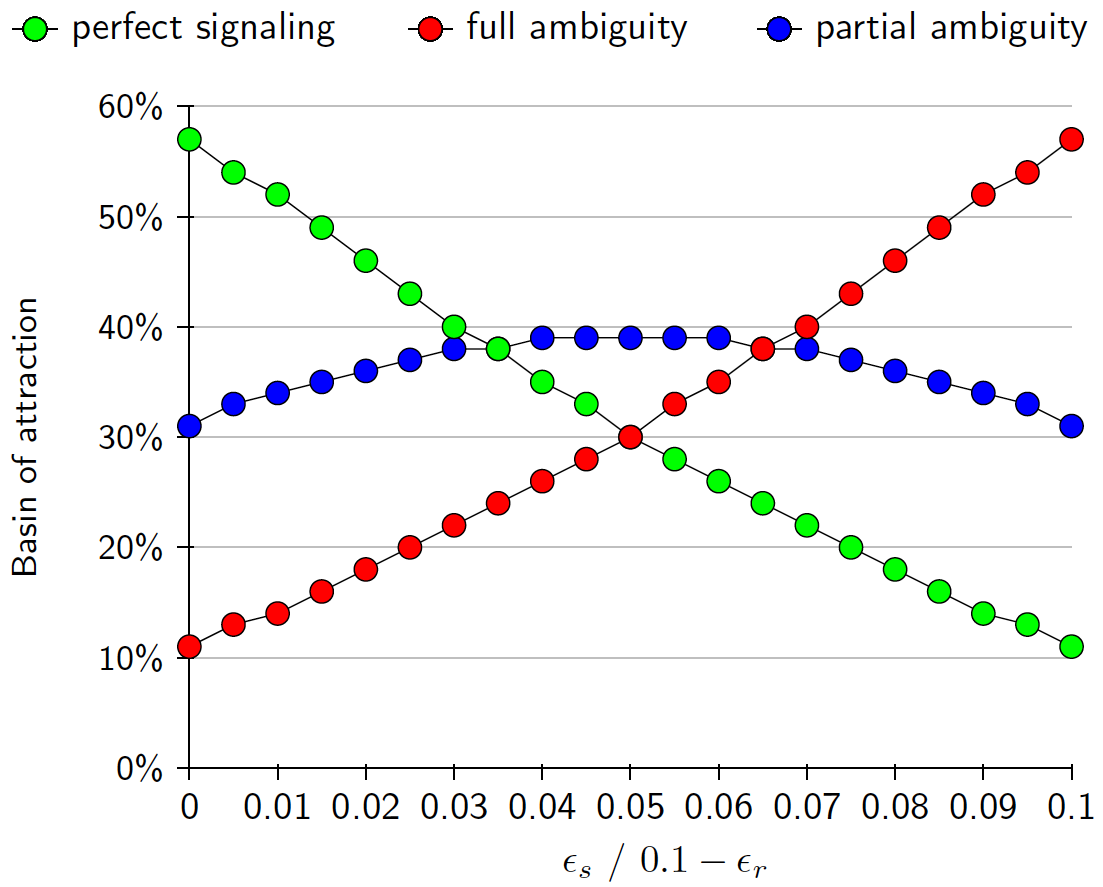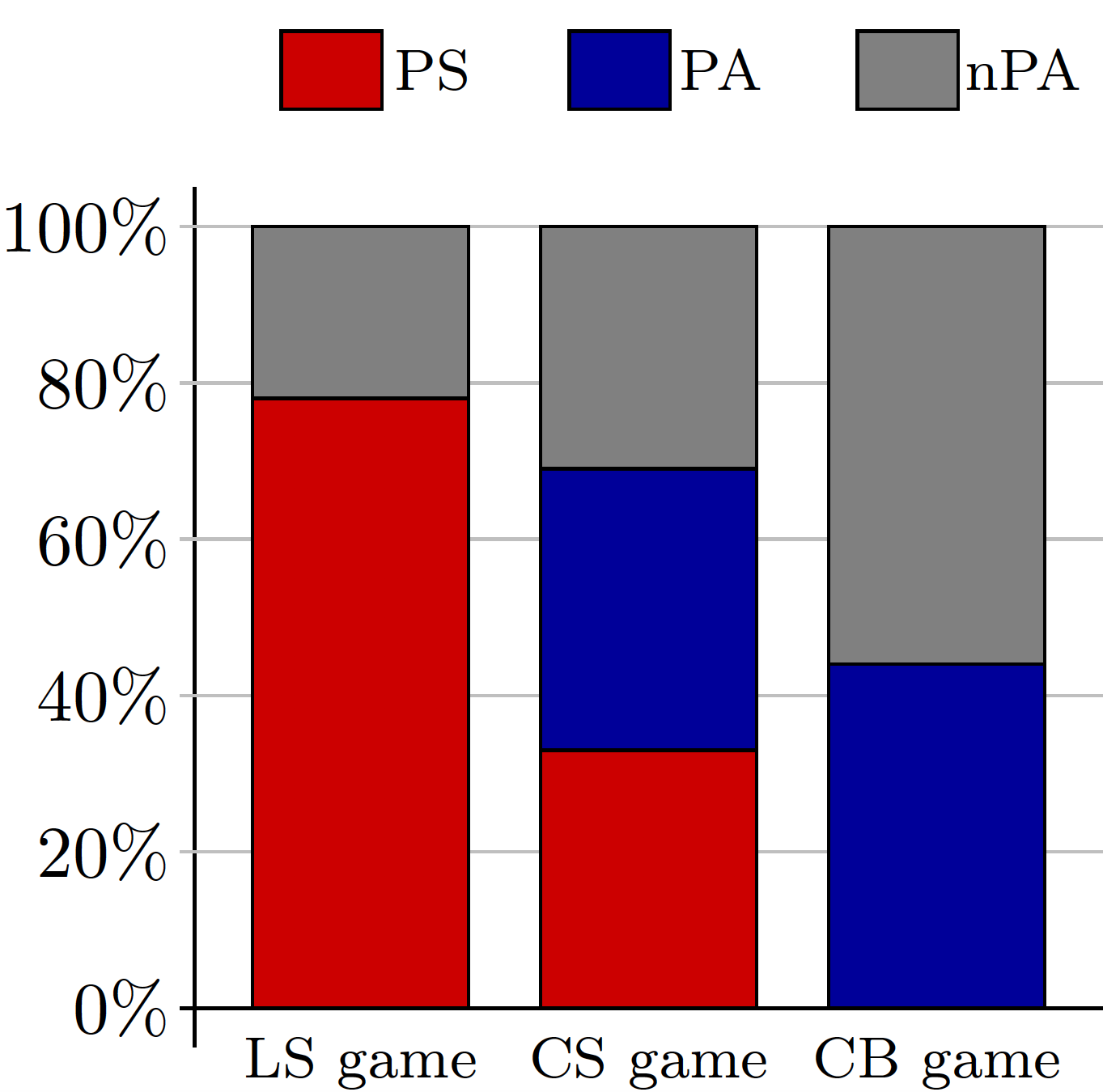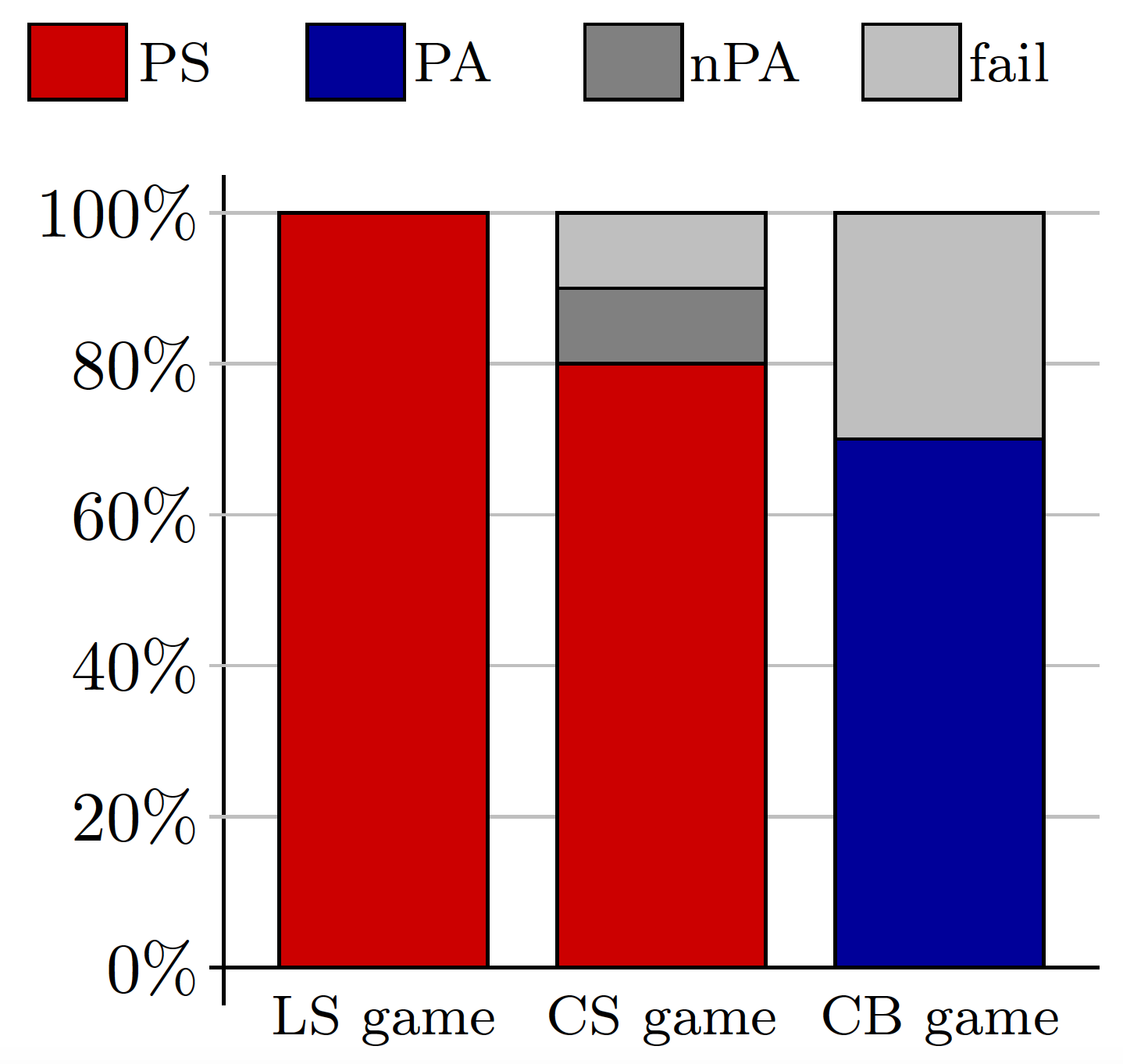Study I: Theoretical background
The first study of the project introduces the theoretical background of the project, which is important for
the formal analysis of evolutionary stability of ambiguity in communication systems (see study II). It presents the
'context signaling game' as a game-theoretical tool for modeling communication systems. Furthermore, it introduces
tools and solution concepts from evolutionary game theory (EGT), such as (i) the replicator dynamics, (ii) evolutionary and stochastically stability, and (iii) basin of attraction calculations. Game model and tools are introduced exemplarily with respect to two grammatical systems of human language: case grammars and progressive (aspect) grammars. E.g. Figure 1 shows the trajectories under replicator dynamics (projected on a simplex) for a 3x3 symmetric game of grammar strategies with respect to progressive grammar systems.
The study has been published as 'How to use evolutionary game theory to study evolutionary aspects of grammar' in the edited volume 'Language Change for the Worse', Berlin: Language Science Press.

Study II: Evolutionary stability of ambiguity (Formal/computational analysis)
The second study of the project investigates the evolutionary stability aspects of communication strategies of context signaling games. For a minimal example game, I show that three strategy types are evolutionarily stable, which are labeled as perfect signaling (PS), full ambiguity (FA), and partial ambiguity (PA). I show the conditions under which each of the system is stochastically stable (a refinement of evolutionary stability). Moreover, I show that PA systems (i) emerge most frequently under simple imitation dynamics by starting from a initially random distribution, and (ii) have the greatest basin of attraction under evolutionary dynamics, when sender costs (for complexity of production) and receiver costs (for effort of disambiguation) are minute and/or very similar (cf. Figure 2).
The study has been published as 'Evolutionary stability of ambiguity in context signaling games' in the journal 'Synthese'.

Study III: The Evolution of Ambiguity in the Lab (online experiments)
The third study of the project investigates the context signaling (CS) game in three ways: formally, computationally, and in laboritory experiments. The formal evolutionary analysis of CS games shows that ambiguous signaling systems can achieve perfect information transfer and form evolutionarily stable states. Moreover, the computational analysis (multi-agent simulation experiments) of the CS game shows that ambiguous signaling systems have the same basin of attraction (=emergence probablity) than perfect signaling systems (one-to-one mapping between information states and signals) under a range of standard adaptive dynamics. We contrast these results with an experimental study, where pairs of participants play the CS game for multiple rounds with each other in the lab to develop a working signaling strategy. This comparison shows that unlike the virtual agents, human agents clearly prefer perfect signaling systems over ambiguous signaling systems (cf. Figure 3 left for computational results, and Figure 3 right for experimental results). The study has been published as 'The evolution of ambiguity in sender-receiver signaling games' in the journal 'Games'.

